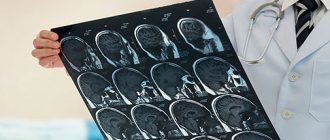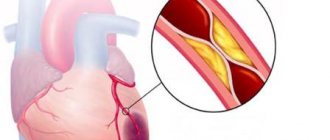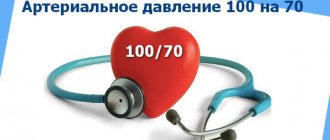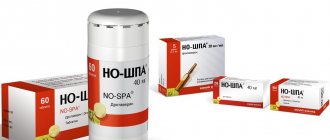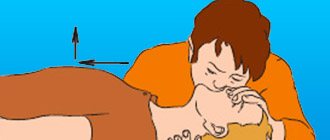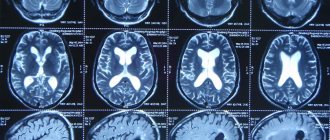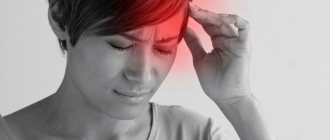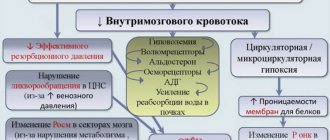We live in a constant abyss of worries: heaps at work, bills for housing and communal services, an atrocious boss and early rises. All this fuss affects the human nervous system and causes headaches. However, not only a busy schedule can cause its appearance; there are many other explanations for this illness.
It is very rare to meet a person who has not experienced a headache. This complaint is one of the most common, according to doctors. And more than 13% of the population of our planet suffers from chronic headaches.
What if your head hurts in your temples?
Temporal headache is the most common type of headache.
Experts attribute the following to the primary reasons:
- neuralgia
- cluster pain
- overvoltage
- migraine
Secondary causes include:
- cerebral vascular damage
- taking medications
- head or neck injury
- non-vascular intracranial lesions
- HIV infection and AIDS
- hemostasis disorder
- pathology of the skull
- psychological illnesses
What to do if you have a headache in your temples? – If this happens for the first time, then you need to take an analgesic. If the pain persists after taking painkillers, you should consult a specialist. If you experience intense and frequently recurring pain in your temples, it is better to consult a therapist or neurologist. If the pain is a consequence of an injury, then you should make an appointment with a surgeon or traumatologist.
What if you have a headache in the back of your head?
Usually such a severe headache chills a person and prevents him from functioning normally. This is a very serious inflammation that you should not experience on your own without medical help. Usually the back of the head hurts due to pathologies. It is better not to try to relieve the disease with analgesics, but to immediately consult a doctor.
Headache in the back of the head can be a signal of diseases:
- nervous system
- vessels
- spine.
Causes of headaches in the back of the head:
- Tension headache. Usually discomfort is associated with tension in the neck muscles. They compress the arteries and nerves that carry blood and impulses to the brain, which is accompanied by a pain reaction in the back of the neck and in the back of the head. In some cases, the provoking factor is emotional tension and stress, which leads to spasm of the neck muscles.
- Migraine is an acute and painful attack of unilateral and occipital headache. An attack can last for several hours or several days. The cause of the disease can be physical activity, overexertion and changes in weather conditions. Most often, women suffer from migraines, and the average age of those affected is from 25 to 35 years.
- Osteochondrosis of the cervical spine is a chronic progressive disease that thins the cartilage in the neck. It can occur after a neck injury, vertebral displacement, sedentary lifestyle or excess weight. The disease can also cause pain in the back of the head.
- Sudden pressure surges.
- Occipital neuralgia provokes an acute headache. Discomfort begins in the occipital region, but can spread to the frontal and temporal lobes. This condition can occur after a neck injury, arthritis, or muscle spasms.
- Use of medications. In self-medication, people “prescribe” themselves medications to treat migraines. This initiative provokes a medicinal headache. It occurs as a reaction of the body to frequent intake of active substances of analgesics.
Treatment
Conservative therapy
Therapeutic tactics are determined by the nature of the pathology:
- Sinusitis
. At the initial stage, drugs from the group of aminopenicillins or cephalosporins are prescribed, then, if necessary, medications are replaced taking into account antibiotic sensitivity. NSAIDs, antihistamines, decongestants, vitamins, and local antiseptics are used. Punctures, rinsing, and anemization of the mucous membrane are performed. - Encephalitis, meningitis
. The basis for the treatment of inflammatory processes of bacterial etiology is massive antibiotic therapy. Medicines are administered parenterally (intramuscularly, intravenously or endolumbarally). For viral encephalitis, antiviral and symptomatic therapy is indicated. - Arterial hypertension
. Blood pressure is normalized with the help of antihypertensive drugs. Antiplatelet agents, beta blockers, diuretics, and drugs with lipid-lowering effects are used. Patients with secondary hypertension require treatment of the underlying pathology. - Intracranial hypertension
. Diuretics are used, as a rule, in combination with potassium-containing medications. The causative pathology is treated by detoxification, the use of venotonics, and antibiotics. Neurometabolic drugs are prescribed. - Migraine
. Relief of attacks is carried out using painkillers and caffeine-containing drugs. Triptans are effective for the prevention of new paroxysms in the interictal period. - Damage to ganglia and nerves
. For trigeminal neuralgia, anticonvulsants, antispasmodics, microcirculation correctors, therapeutic blockades, and physiotherapy are indicated. For Slader syndrome, anti-infective, anti-inflammatory, and anti-allergic drugs are needed.
Patients with ophthalmological pathologies undergo vision correction using glasses and contact lenses. For glaucoma, medications are prescribed to reduce intraocular pressure. Treatment of diseases with intoxication syndrome involves taking large amounts of fluid or intravenous infusions, therapy with drugs with symptomatic and etiopathogenetic effects.
Surgery
The following operations may be recommended for patients:
- Sinusitis
: open or endoscopic frontotomy, maxillary sinusotomy, ethmoidotomy, polysinusotomy. - Intracranial hypertension
: decompressive craniotomy, external ventricular drainage, various shunting options. - Eye diseases
: laser correction of myopia, farsightedness and astigmatism, laser and traditional iridectomy, iridoplasty, trabeculoplasty, other interventions for glaucoma. - Trigeminal neuralgia
: stereotactic operations, microsurgical decompression, radiofrequency destruction.
Why does my head hurt and feel nauseous?
Among the causes of nausea and headaches are infectious and non-communicable diseases, pathologies of the nervous and cardiovascular systems. The disease manifests itself due to intoxication and insufficient blood supply to the brain. Typically these symptoms indicate severe fatigue and impairment. This type of headache can also occur during pregnancy.
Causes:
- Overwork and lack of sleep. The body does not have time to recover and rest due to lack of sleep, which leads to negative health.
- Viral diseases that affect body systems and organs. Additional symptoms in such cases will be fever, muscle and joint aches.
- Viral diseases can cause headaches and nausea. For example, flu or sore throat, as well as seasonal infection, can trigger the disease. In this case, experts recommend bed rest and drinking plenty of fluids.
- Lyme disease is an infectious disease caused by a tick bite.
- Pregnancy.
Why does my head hurt in the forehead area?
This phenomenon is quite common in all age groups of the population. Such pain can be acute or chronic, occur independently or in combination with other symptoms. Pain in the frontal lobe occurs even in a healthy person, so their one-time occurrence should not be a cause for concern.
If a person constantly has a headache in the frontal lobes, then there are a number of reasons for this:
- Tension headaches can occur even in healthy people. We must remember that rest is an integral part of the life process. This pain may go away after taking analgesics.
- Eye pain may also spread to the forehead area. The pain begins behind the eyes and spreads to the frontal lobe. Its manifestations are similar to tension headaches: they occur against the background of overwork or active mental work, last from several hours to several days, and are easily relieved with over-the-counter analgesics.
- Sinusitis causes sharp pain in the frontal part of the head and nose. Accompanied by impaired nasal breathing, lacrimation and decreased sense of smell.
- Arteritis is considered the rarest cause of headaches. The disease is associated with inflammation of the walls of large arteries. They become dense and visible above the surface of the skin. The main symptom of the disease is acute pain in the forehead.
Diseases of the ENT organs
Pain syndrome may appear due to inflammation of the frontal sinuses.
Sinusitis is characterized not only by a severe runny nose with purulent discharge, but also by very sharp pain along with a feeling of pressure on the eyeballs. Since the inflammatory process occurs near the brain, this disease is quite dangerous.
With frontal sinusitis, when there is inflammation of the mucous membrane of the frontal sinuses, pain occurs in the morning. To exclude this pathology, you need to consult with an ENT doctor.
Why does my head hurt after sleep?
A morning headache brings discomfort throughout the day. Night sleep is the time when, after a hard day, our body restores strength. But from time to time awakening is overshadowed by unpleasant sensations.
The reason for such an uncomfortable awakening may be:
- Uncomfortable sleeping position.
- Incorrectly chosen pillow or mattress. Ignoring this moment leads to morning pain throughout the body, including the head.
- When the condition of blood vessels deteriorates, blood pressure is disturbed, which affects the quality of our sleep. Then feeling unwell becomes frequent.
- Head injuries can also contribute to headaches in the morning. It can occur a week or a month after the injury.
- Sinusitis makes breathing difficult, which causes a headache when waking up.
- Cervical osteochondrosis is a displacement of the spine in the cervical region. With this disease, the supply of oxygen to the brain is disrupted.
Diagnostics
A neurologist is involved in determining the cause of pain. According to indications, the patient is referred for consultation to an otolaryngologist, ophthalmologist, and other specialists. The doctor finds out when the symptom first appeared, how often it appeared, how it changed over time, and what manifestations it was accompanied by. Collects a life history, clarifies the presence of chronic diseases that could cause pain.
During the examination, it is sometimes possible to detect external changes, for example, lacrimation, redness and swelling of the face, but in most cases the physical examination is not very informative. To make a final diagnosis, the following are prescribed:
- Otorhinolaryngological examination.
Along with the standard techniques used during a general examination, the doctor conducts an examination using mirrors and special instruments. For sinusitis, rhinoscopy is indicative, confirming the presence of edema, hyperemia, serous or purulent discharge. Sinusoscopy requires expansion of the natural openings of the sinuses, so it is rarely performed for diagnostic purposes. - Ophthalmological examination
. Includes visometry, ophthalmoscopy, measurement of intraocular pressure, refraction studies, eye biomicroscopy, and other studies. Helps determine the nature of visual impairment, the preferred correction option, and the need for surgical intervention. - Neurological examination
. Involves assessing the symmetry of the palpebral fissures, pupils, facial features, examining the sense of smell, checking the integrity of the function of the facial muscles, and palpating the exit sites of the branches of the trigeminal nerve. The doctor examines movements, sensitivity, reflexes in the torso and limbs. Identifies pathological symptoms (for example, meningeal). - Radiography
. For sinusitis, radiography of the paranasal sinuses is indicated. The study reveals the accumulation of dense masses, and in a chronic process - deformation of the bone walls of the sinuses. To increase information content, it can be carried out with contrast. X-ray of the skull is required if a TBI is suspected. With long-standing intracranial hypertension, “finger impressions” are visualized. - Ultrasound techniques
. During echoencephalography, hydrocephalus, cerebral edema, displacement of midline structures due to tumors, hematomas, and other space-occupying processes are determined. Duplex scanning and Doppler sonography are recommended for patients with vascular lesions. They allow you to get an idea of the speed of blood flow and the state of blood circulation in various parts of the brain. - Tomography
. Computed tomography and magnetic resonance imaging of the brain provide complete information about structural changes in brain tissue, size, and location of pathological foci. Used at the final stage of diagnosis. To assess the condition of blood vessels, differentiation of tumor processes is performed with contrast enhancement. and MRI of the paranasal sinuses are required when the basic diagnostic procedures are insufficiently informative; they confirm the presence of sinusitis and other pathologies (tumors, cysts). - Lumbar puncture.
It is carried out to determine the pressure of the cerebrospinal fluid, detect hemorrhages, and inflammatory processes. During subsequent microscopic examination of the cerebrospinal fluid, the composition of the cerebrospinal fluid is clarified. For bacterial and viral infections, a microbiological analysis or PCR test is performed.
In some cases, special samples are required. For example, ganglionitis of the pterygopalatine ganglion is confirmed if the symptoms disappear after lubricating the nasal cavity with a solution of dicaine and adrenaline. For a number of pathologies, laboratory tests are necessary to confirm the inflammatory process and determine the pathogen.
Neurological examination
Does paracetamol help with headaches?
Paracetamol is an affordable and time-tested medicine for various types of pain. The drug alleviates the physical condition and has almost no side effects. The medicine helps adults and children, but requires careful dosage when used.
Paracetamol mainly acts as a pain reliever. The phenacetin derivative inhibits the production in the body of compounds responsible for sensitivity to pain - prostaglandins. At the same time, it affects the thermoregulation centers, reducing high body temperature.
Paracetamol is good for relieving headaches in acute respiratory infections. In other cases, it is worth using another analgesic or seeking medical help. In some cases, paracetamol will only dull the pain, but not solve the problem completely.
